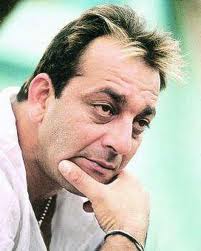As things are returning back to normalcy in Nepal, Mr Ken Subedi recounts the horrific month, when a massive earthquake shook the city, leading to tremendous amount of destruction. The city of temples resembled like the city of tents. All the open spaces were occupied with tarpaulins, he writes.
April proved to be the cruelest month for all the Nepalese as an immense earthquake hit central hilly districts of Nepal on April 25, killing thousands of lives. It was Saturday and I was in hospital for my check up of arthritis. I went later to collect the report and suddenly felt something unusual. I knew I was shaking. For the first two seconds I thought I was feeling dizzy as I had got injected a few minutes ago. But it wasn’t that. I knew then it was an earthquake and the first thing to do was to escape the place as life was in danger. I was on the second floor and was on my way down. Taking two big, fast steps, I reached the ground successfully and exited the structure.
The shaking ladder led to me falling down in a very haphazard manner. I lifted my collided leg and trampled on the ground. I was the first one to reach outside and saw people running out of their offices and buildings. In between my reports were blown away by the air. My leg was injured, I saw later, experiencing the further powerful tremors.
That was my fate, but, fortunately, I am alive and fine. Thousands of people were killed due to the collision of houses. Hundreds of them turned orphans, widows and disabled. But it was not the end. On April 26, a day after, another earthquake of 7.3 hit Dolakha, a central hill town. Almost all houses of Gorkha had collapsed. Most of the houses in Sindupalchowk and Dolakha were destroyed too, because of the powerful tremors. Some houses in Kathmandu had trimmed so much that they had become unfit for habitation.
Centuries-old buildings, Nepal’s famous heritage sites, which we all grew seeing and visiting, in the Kathmandu Valley, Kathmandu Durbar Square, the Patan Durbar Square, the Bhaktapur Durbar Square, including the Changu Narayan Temple and the Swayambhunath Stupa, were badly damaged. UNESCO World Heritage sites suffered massive harm during the earthquake. We later learned that geophysicists and alternative specialists had warned for many years that Nepal was prone to an earthquake as deadly as this, significantly as a result of its geology, urbanization, and architecture.

Mr Ken Subedi
The city of temple resembled like the city of tents. All the open spaces were occupied with tarpaulins. There were significantly less open spaces in Kathmandu due to which many people lived in terror. Closely constructed houses were real threat as there was either no or very little open space left to save one’s life. Only the people of Nepal know what days they witnessed when the deadly quake shook the nation.
The political leaders and their cadres did not turn out to be much active in relief distribution rather non-government organizations did. The civil groups and community people were actively participating in helping the troubled and earthquake-hit families.
But now, the concerns that lay ahead are building temporary houses made of zinc sheets and bamboos, most are engaged in, as the monsoon is nearing, and the need for having proper houses is getting significantly crucial.
In the meantime, news has been out, recently, related to the unequal distribution of relief material, especially tarpaulins, and some corrupt dealers are said to have a hand in it. Another thing which is bothering most is the artificial price hike, which has not so surprisingly, emerged, leading to the police officials and local administration monitoring and regulating it, with assistance of the media.
Aid and help are pouring in through different NGOs, but there should also be a body to monitor and regulate the aid provided for relief and reconstruction. The fear has not ended yet. Thousands of aftershocks have gone by and they are still striking. But even during this moment of crisis, the people of Nepal are united. Humanity and the feeling of brotherhood has kept them unified. Attempts are on to overcome the tragic memories with the sense of support for each other and mutual cooperation. And with this strong bond, Nepal will certainly rebuild its heritage, stronger than before!
Ken Subedi is a Nepal-based freelance writer. He writes for national dailies of Nepal and was there in Kathmandu at the time of the earthquake.
Disclaimer: The opinions expressed within this article are the personal opinions of the author. Spectralhues is not responsible for the accuracy, completeness, suitability, or validity of any information on this article. The information, facts or opinions expressed in the article do not reflect the views of Spectralhues and Spectralhues does not take any responsibility or liability for the same.
Tags: Nepal Earthquake








